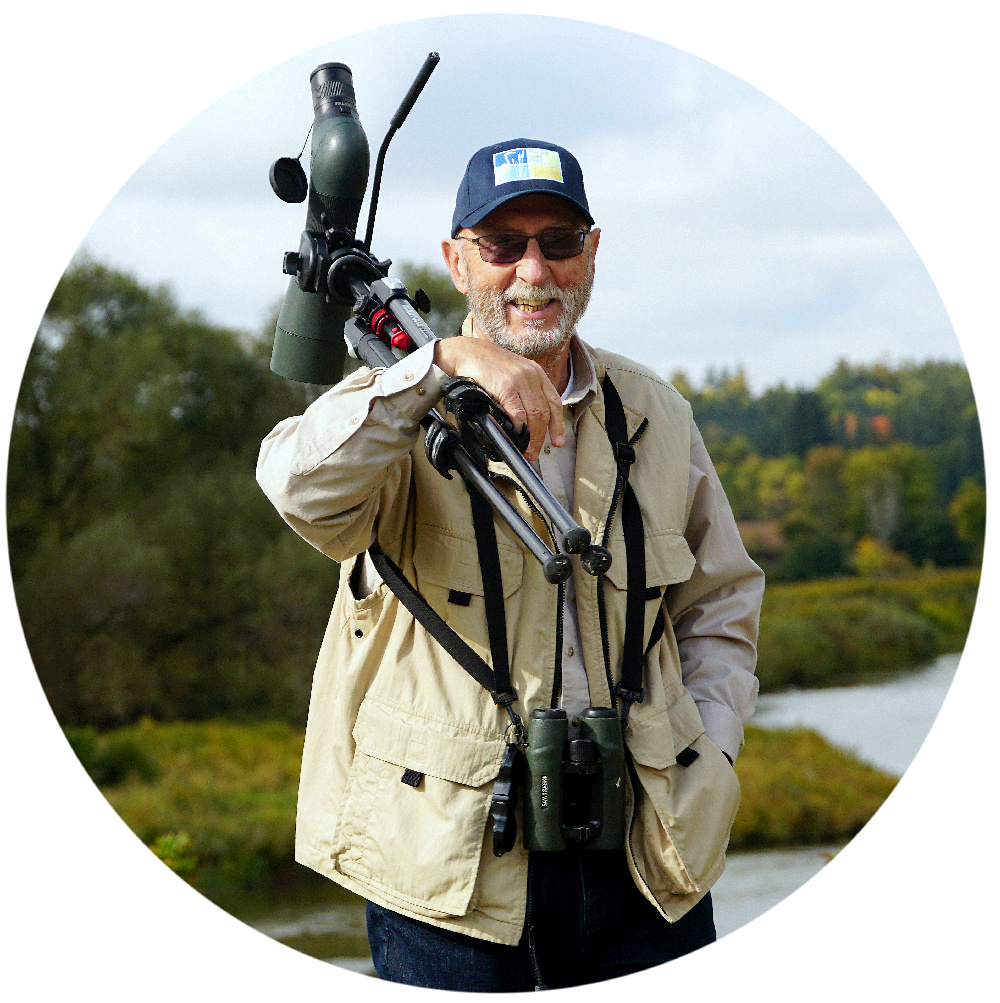After due consideration, looking back on my life, if I had it all to do again, ignoring prior restraints that would have in reality mitigated against such a choice, I would be a seabird biologist. Little, it seems to me, could have much greater appeal than to get paid for researching what is surely one of the most fascinating group of organisms on earth - or should that be at sea?
Thus it was with great pleasure that I received an advance copy of Far From Land (a lovely, evocative title to be sure) for review. Not only did the subject hold instant appeal, it was heartwarming to see that its author is Michael Brooke, whose output I have long admired by way of his prior work on albatrosses and petrels, and his co-editing of The Cambridge Encylopedia of Ornithology. along with Tim Birkhead. This was akin to an aficionado of a novelist getting his hands on the next title. And I read it with the same voracious enthusiam!
Through Brooke's eyes I would relive the incredible excitement, and emotional high, of my first albatross in the Benguela Current off the coast of South Africa, one of the richest feeding grounds for pelagic species in the world.
Michael Brooke writes with all the expertise and knowledge of a seasoned biologist, consolidating years of research into one easily readable book, but displays a wry sense of humour, unrevealed in strictly scientific works. The format makes a complex topic accessible to a reader with even a bare minimum of prior knowledge.
It has always been relatively easy to track landbirds, with devices as simple as a metal band placed on their leg with an identifying number, and even though the recovery rate is minimal, information is built up over time as to the migratory patterns of numerous species, with inferences on routes taken, flight speeds, stopover areas, and other useful information. Consider for a moment the near impossibility of tracking seabirds, who spend the bulk of their lives far away from land, traversing and sometimes circumnavigating the globe. A metal band is as likely to wind up in the stomach of a shark as to be recovered ashore.
The development of mini satellites and the increased miniaturization and sophistication of trackers (and other devices) has now made it possible to follow seabirds on their peregrinations around the globe. Many prior held assumptions about migratory routes have been dispelled and new information has been gathered about the different dispersal and feeding patterns of adults versus juveniles. Data has been amassed and analyzed on the mix of birds feeding in areas with changing productivity layers - and countless other topics, all organized in chapters following on one from the other.
There is an extensive bibliography for each chapter, enabling anyone with sufficient curiosity to explore these topics in far more detail.
The text is enough to satisfy the discriminating reader, but an added bonus is a series of exquisite illustrations by Bruce Pearson, a wildlife artist whose delicate touch is well known to many natural history enthusiasts.
I found this art especially pleasing and it added measurably to the enjoyment of the work.
And to cap it all, I discovered a new word. The word is rumbustious, defined in the Oxford Dictionary as "noisy, boisterous, uproarious." This descriptive is used by Brooke to denote the attitude of a bird he was handling, but perhaps seabird biologists like him are a tad rumbustious at times. Would that I were one of them.
Publication date: 21 March 2018 Price: US$29.95
Wednesday, January 17, 2018
Book Review - Far From Land - Princeton University Press
David M. Gascoigne, Wednesday, January 17, 2018
David M. Gascoigne,
I'm a life long birder. My interests are birds, nature, reading, books, outdoors, travel, food and wine.
you may also like
Subscribe to:
Post Comments (Atom)
Land Acknowledgement
We acknowledge that the land on which we are situated are the lands traditionally used by the Haudenosaunee, Anishinaabe, and Neutral People. We also acknowledge the enduring presence and deep traditional knowledge, laws, and philosophies of the Indigenous Peoples with whom we share this land today. We are all treaty people with a responsibility to honour all our relations.
Followers
Welcome

My name is David. I'm a lifelong birder, fiercely committed to all of nature, however. Married to Miriam Bauman. I love to travel. I Enjoy a good book and a good glass of wine. To read more about me, click my ABOUT page.
Follow by Email
Search This Blog
Blog Archive
Popular Posts
-
23 October, 2025 Predictably, Mallards ( Anas platyrynchos ) were easily found. You will note just left of centre in the picture...
-
I am quite confident in my judgement when I say that nuthatches (Family Sittidae ), small birds with a remarkable ability to scurry dow...
-
22 November, 2025 Leader: David M. Gascoigne Participants: Farid Asey, Heela Asey, Mina Asey, Palwasha Asey, Sameer Asey, Mary Ann Cassidy, ...
-
It has been a long time since I received those annoying, “Fail to publish, please try again later,” notices, but it is happening aga...
-
02 November, 2025 We had been invited to take a stroll though Laurel Creek C.A. with good friends, Dave and Mary, followed by coffee ...
-
29 November, 2025 After a snowy overnight, with everywhere white and glistening, it was a perfect day for an outing with our little Pri...
-
“To raise a nature-bonded child is to raise a rebel, a dreamer, an innovator… someone who will walk their own verdant, winding path.” Nicol...
-
I just returned from a successful and highly enjoyable visit to Colombia with birding friends. We'll all have very fond memories fo...
-
As I continue to be afforded the great pleasure of leading outings for Waterloo Region Nature, I am offering two options for local de...
-
6th Mass Extinction - Nat Morley "Man has lost the capacity to foresee and forestall. He will end by destroying the Earth." Albert...






















It seems like a very good book! Good books are very useful. Beautiful drawings.
ReplyDeleteHari OM
ReplyDeleteYour enthusiasm for this book is most appealing David! Yes, rumbustious is quite an old-fashioned English word. I think the more common expression is the later American version of 'rambunctious'. Either way, a lot to handle &*> YAM xx
Much as I can see your enthusiasm for this book, David, it's probably not one that I will buy as the subject matter is a little off my mainstream interests. I have enjoyed reading your eloquent (as always!) review, however.
ReplyDeleteUntil now I'd not been aware of your marine biology yearnings. It's possibly a silly question, but are you aware of the David Attenborough 'Blue Planet' programmes, or have they been confined to UK? The 'Blue Planet II' series recently finished airing in UK, and it's the most interesting, and superbly filmed, wildlife documentary series I've ever had the pleasure of watching.
My love to you and Miriam - - - Richard
Hi Richard: I am very much aware of the Attenborough "Blue Planet" series and I am looking forward to the latest series, which are not yet available here, but surely will be. In my opinion David Attenborough is one of the great figures extant today, worthy of all the admiration and accolades which have been directed his way. If I could have lunch with only one person in the world it would be him. Much love to you and Lindsay.
DeleteBonjour cher ami,
ReplyDeleteIl est toujours intéressant de partager l'admiration qu'on ressent pour un ouvrage... Je suis heureuse que ce dernier ait attiré ton attention et qu'il t'apporte du bonheur.
Gros bisous 🌸
A marine biologist would be great but if I had my time again I would try to be an anthropological archaeologist................digging around for ancient hominid bones in east Africa with lots of birding on the side.
ReplyDeleteHello David!
ReplyDeleteVery interesting book!
And lovely drawings of the author.
I love watching seabirds!
Thank you for the review!
Have a lovely day!
Dimi...
Hello David, thanks for sharing your review on this book. The art is beautifully done. I assume some of these birds could be seen on a pelagic trip? Happy Thursday, enjoy your day!
ReplyDeleteIndeed, Eileeen. That is where most of us will get our all too brief and all too infrequent encounters with these species. Few of us will ever be able to visit their far flung breeding colonies, and while some birders can afford the substantial expense of a visit to Antarctica it is out of the reach of many. I have been fortunate to have made pelagic excursions in the Benguela Current and the Humboldt Current, arguably two of the best in the world, and the experience is nothing short of incredible.
DeleteThanks for this review, David. I am interested in sea birds but am a terrible sailor so have to settle for videos and books like this one. I often think what I would like to do if I could start again. It would be a biologist, but I haven't yet decided what I would specialize in.
ReplyDeleteHello David,
ReplyDeleteWhat a great shots of this owl. Wonderful.
Greetings, Marco
I've made a note of the book, and will place an order. Thanks for the review and bringing the book to my attention !
ReplyDeleteYou of all people will really enjoy it, John.
Delete